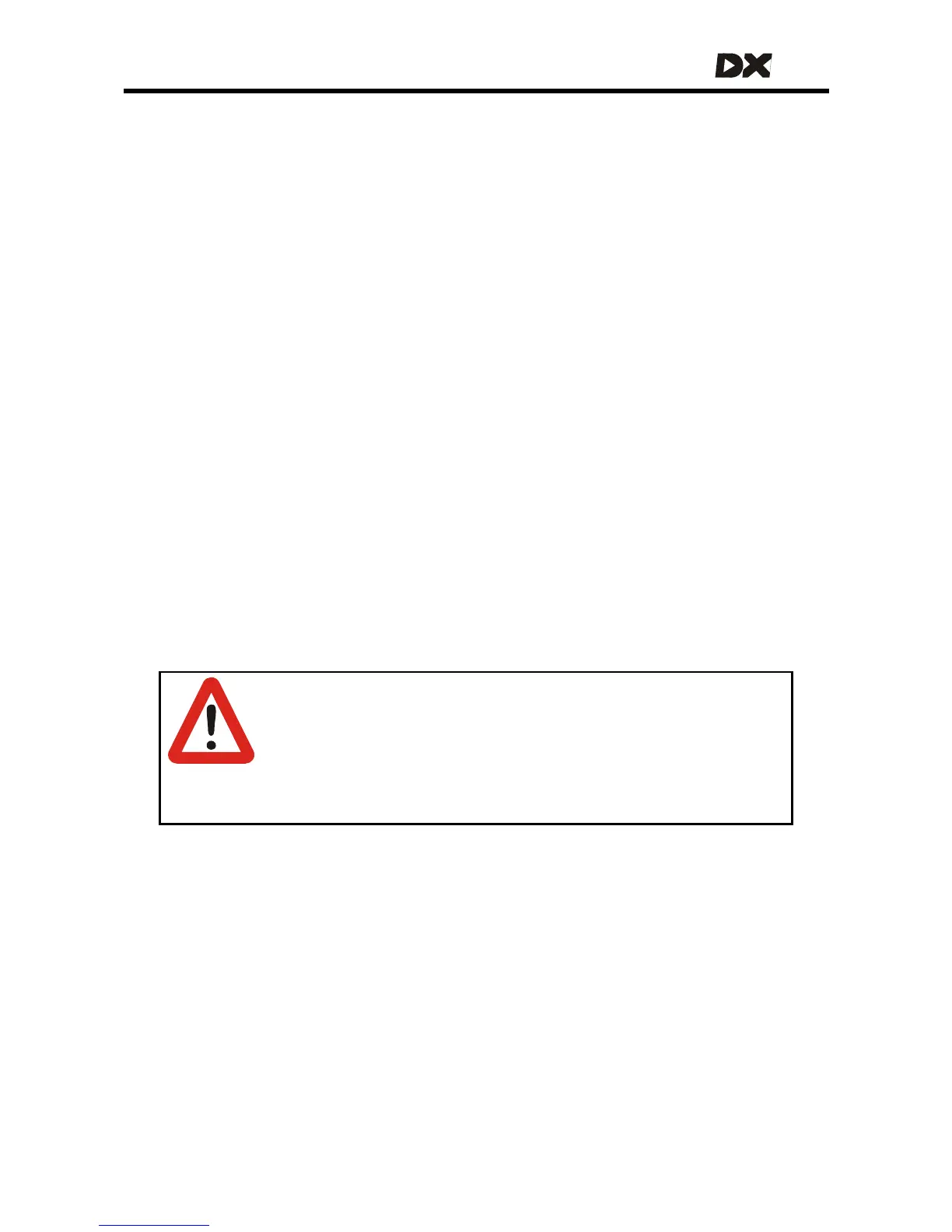MT
6 DX Modules
6.1 Introduction
Including the Power Module and the Master Remote, a DX System can contain up to
16 DX compatible modules dependent on the application.
Available types of DX Modules are
• Remote Joystick Module (RJM),
o DX-RJM Secondary Remotes
o Switch modules
• Attendant Control Unit (ACU), joystick with attendant switch and Speed Pot
o DX-ACU1
• Actuator Remote Control (ARC), 5 channels of extend/retract switches
o DX-ARC / DX-ARC-SWB
• Servo Steering Motor Modules
o DX-SLM, for steering servo motor control + lights
• Lighting Modules
o DX-SLM/ DX-LM/ DX-CLAM
• Actuator Modules
o DX-CLAM/ DX-TAM
• Environmental Control Unit Modules (ECU)
• DX-KEY Modules enable third party devices to interface with the DX System
The DX System has the option to declare some DX Modules as safety critical. This
makes sure that the DX System will not operate when that particular module is not
detected during power-up.
Warning:
Each DX Module has its own Installation Manual that describes the
installation requirements of that particular module. This chapter gives a
brief description of several DX Auxiliary Modules, but it is not a substitute
for the manual of those modules. If you have purchased a specific
DX Module, read and understand the manual of that module before
using the module.
6.1.1 The GPSB/SLIO
Some DX Modules, such as the DX-RJM Secondary Remote joystick, do not perform
any processing or storing of parameter values themselves. All the processing for these
modules is done in the UCM (see
5.1.1). The modules only read the joystick position
and send this through the DX BUS to the UCM.
Because they don't need any local intelligence, these modules have a simple
communication device that connects them to the DX BUS. This communication
device is internally located on the 'General Purpose SLIO Board' (GPSB) and is called
a 'Serial Linked I/O' (SLIO) device.
97
